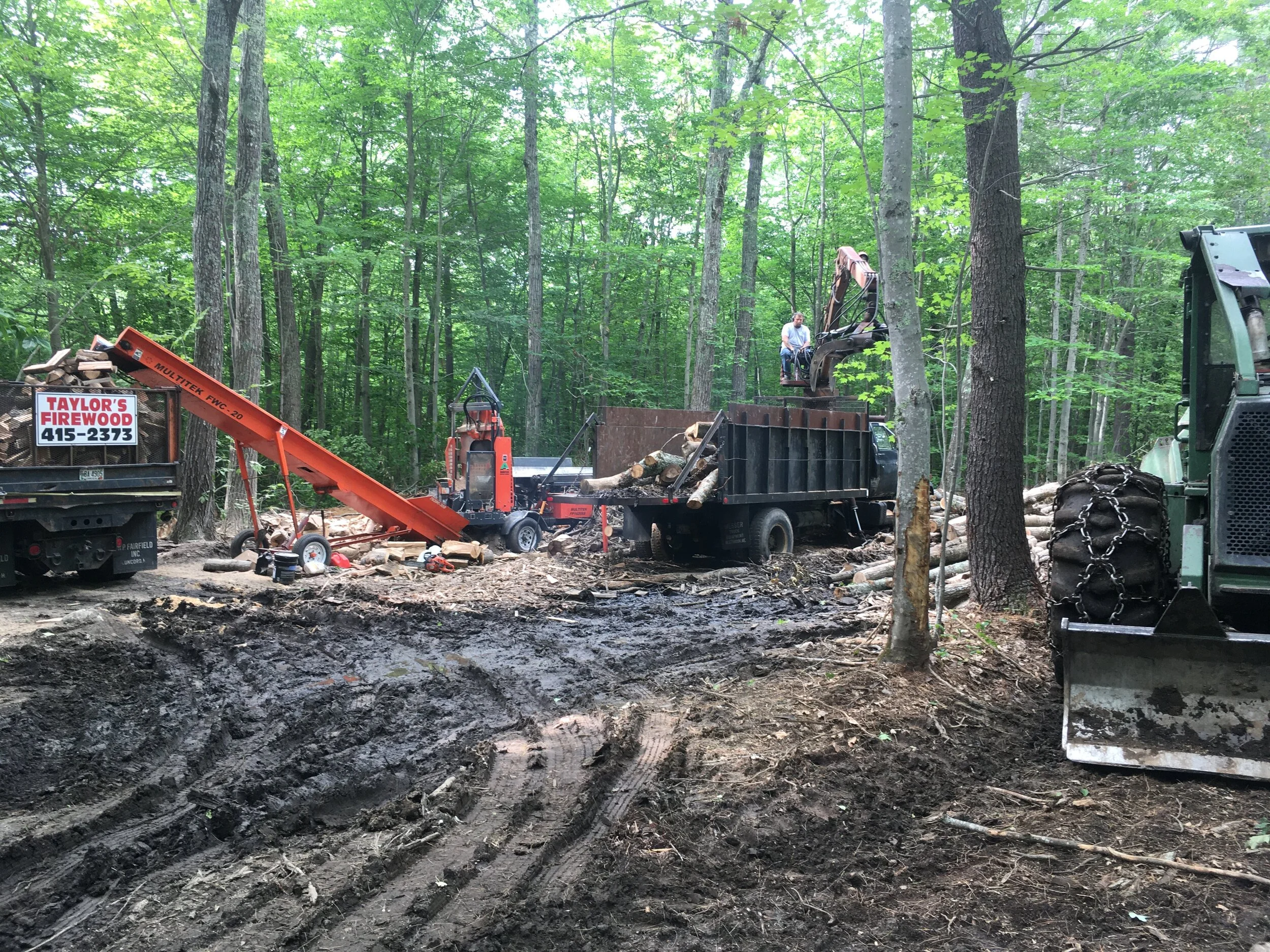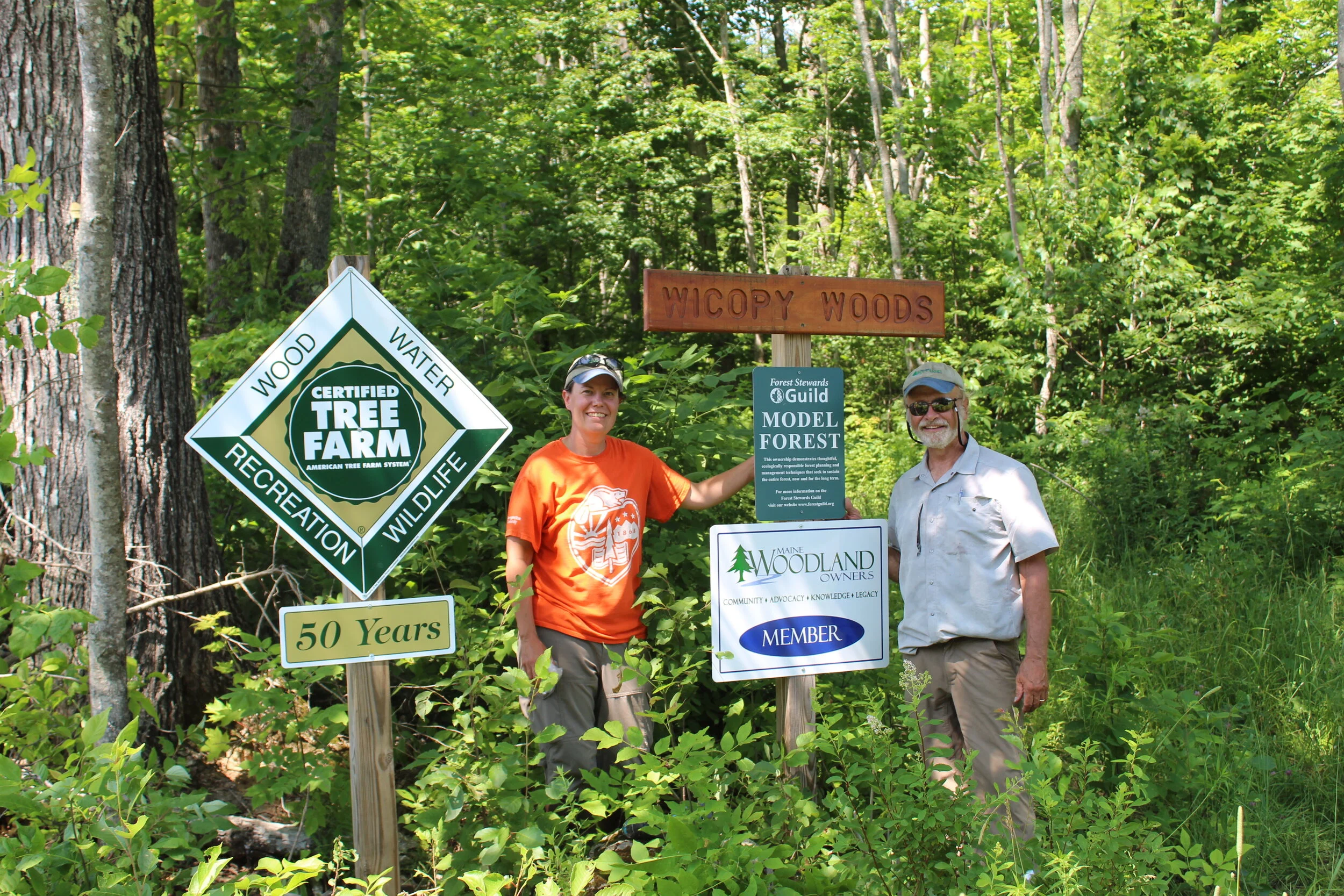Conventional logging is a challenging but rewarding industry. Logger Bill Taylor provides his view from the woods.
Read MoreSome people believe that you can't do anything to control "heart" in northern hardwood logs, but this is simply untrue. I grew the trees on the log pile, shown below, from saplings starting over 40 years ago. Note the predominance of white wood in the red maple. How did I accomplish this?
Read MoreThe Maine Woodland Owners land trust has conducted harvests on four properties in 2020 despite the impacts of the forest product markets, including the COVID-19 virus and the explosion at the Jay pulp mill.
Read MoreJessica Leahy and Bob Seymour are the winners of the 2020 Maine Tree Farmer of the Year for their tree farm in Sebec, called Wicopy Woods. This is the second time this parcel has been recognized. The previous owner, Ron Locke, won the award in 1984.
Read MoreMaine Heritage Timber Co uses more than a century’s worth of sunken old growth timber in Quakish Lake outside Millinocket to build new products with a profitable niche: the growing DIY market for stick-on wall coverings.
Read MoreMaine used to be the “axe capital of the world”. Oakland, ME was the center of the axe manufacturing for over 100 years and produced some of the highest quality tools that today are very collectible.
Read MoreRecent studies show that net growth in U.S. forests offsets 13 percent of total U.S. carbon dioxide (CO2 ) emissions annually. “Carbon offsets” as they are called, are a reduction in emissions of carbon dioxide made in order to compensate for emissions made elsewhere. Offsets are measured in tonnes of carbon dioxide-equivalent (MTCO2e). The forests of many Maine Woodland Owners members surely contribute to these offsets, but due to the difficulty of monetizing them, receiving compensation for offsets takes work.
Read MoreCarbon storage amounts change as trees grow larger and as a forest stand regrows following a clear-cut harvest to a rotation age of 125 years. Additionally, forest management affects the amount of carbon dioxide that is removed from the atmosphere by forests.
Read MoreEven if we have to stay apart - we are still here for you.
Read MoreMax McCormack returns with more wisdom around his favorite hand pruners and what woodland owners should look for when it comes to purchasing these essential tools.
Read MoreForest landowners across Maine have expressed interest in earning credit for carbon offsets, but it’s difficult to know whether one’s land is eligible, how many offsets it can earn, and what those offsets are worth.
Read MoreOn an unusually warm and sunny February afternoon Steve Chandler, his wife Natalie, and his cousin Charlie completed what has been a tremendous act of generosity – the transferring of over 2000 acres of woodland in New Gloucester to Maine Woodland Owners. This is by far the largest gift we have received and has set the stage for exciting growth for our land trust program.
Read MoreMaine has set ambitious climate change goals for the next 25 years. Forests may be able to play a role in meeting these goals.
Read MoreUnderstanding why different species grow where they do – the concept of the forest site or habitat –can be challenging. Just because a tree is growing in a particular spot, does that mean it “belongs” there and will thrive? Generalizations like “hardwoods are limited to deep well-drained soils” or “conifers dominate both saturated and droughty soils where hardwoods will not grow” are helpful, but the reality is more complex.
Read MoreYou probably have been reading a lot about the value of wood structural materials as ways to store carbon, thus slowing the accumulation of carbon dioxide (CO2) in the atmosphere. This would be one benefit of building larger structures with advanced wood composites instead of steel and concrete. So, it is often asked, how much carbon does get stored in a new house? How much CO2 emissions can be saved by using wood to replace other building materials? This can get confusing very fast.
Read MoreWhen foresters use the term silvics, we are referring to characteristics of tree species that define their life history, growth, response to its environment, and ecology.
Read MoreThe State of Maine has set ambitious goals to reduce carbon emissions in the next 25 years. But what role do forests play in the grand scheme of things?
Read MoreWith the donation of the Towle property in Hollis, the Maine Woodland Owners land trust has conserved over 10,000 acres.
Read MoreATV Task Force submitted their recommendations to sustain Maine’s ATV activity.
Read More




















